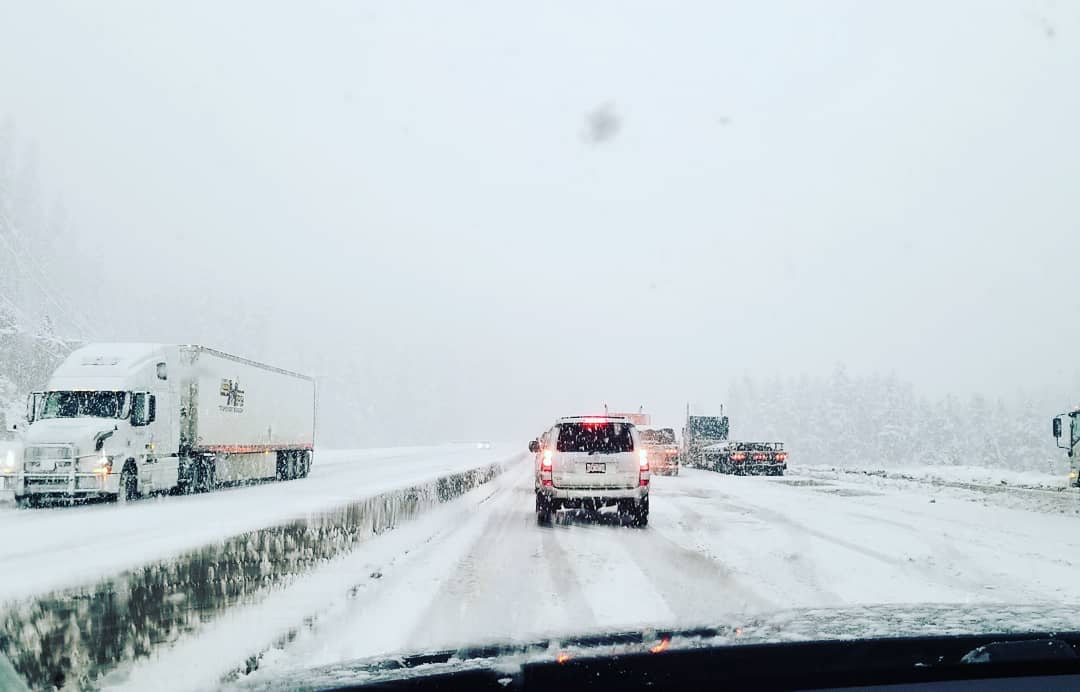Winter has arrived on B.C. interior highway mountain passes.

Overnight snowfall blanketed higher elevation highways including the Coquihalla (Highway 5), Okanagan Connector (Highway 97C), and Hope — Princeton (Highway 3).
The agency has issued a snowfall warning for the Coquihalla Highway between Hope and Merritt, with between 10 and 20 centimetres expected to fall.
It added that snow levels have lowered to the 1,000-metre level.
On Sunday morning, DriveBC said the Coquihalla was closed northbound between Hope and Merritt due to a vehicle incident.
There was no estimated time of opening, and drivers were encouraged to use alternate routes via Highway 1 or Highway 3.
“We’re going to be locked in in this unstable westerly flow just coming in off the Pacific Ocean, so a lot of the snowfall will be directed at the Coquihalla Highway from Hope to Merritt,”
he said.
Two centimetres of snowfall is expected to fall on the Okanagan Connector between Merritt and Kelowna with a 70 per cent chance of flurries overnight.
Hope to Princeton via Allison Pass is in better shape, except “a few flurries near the summit,” said the Environment Canada highway forecast.
Heading east, a snowfall warning remains in effect for Highway 3 from Paulson Summit to Kootenay Pass with total amounts of 15 centimetres of snow expected to fall.
“With the snow level near 1,500 metres, Kootenay Pass is receiving snow at the summit level. In the wake of the front, flurries or rain showers will continue,” said the weather warning.
Gibbons said there will be a reprieve heading into the work week.
“We should get into a little bit of a break to start the week and by the looks of it, mid to late week, we’ve got another system starting to push in.”
The Ministry of Transportation and Infrastructure has issued the following tips for drivers heading up the Coquihalla or high mountain passes:
- Make sure your car has proper tires. For severe winter conditions for passes such as the Coquihalla, winter tires with the mountain snowflake logo provide the best performance. At the very least M+S tires with a tread depth of at least 3.5mm must be used. Check out the winter tire site for more information.
- Make sure both your headlights and tail lights are working
- Make sure your car has a full tank of gas. There is nothing worse than being stuck in a snowstorm because of an accident ahead and watching your last gas fumes drift away, leaving you chilling on a cold and dark mountainside.
- Dress the part. Pack warm clothes, boots, gloves and blankets. Keep them in your trunk. Always.
- Bring food and water. Seems like a simple thing, but those basic things will keep you going if the weather turns sour and you are stuck in your car.
- Check DriveBC. DriveBC has road conditions, events and webcams of those mountain passes, so that you can see what is happening before you go and help you decide if Uncle Bernard’s reunion is really worth the trip. Current weather from ministry Road Weather Stations and Weather Forecasts from Environment Canada (including High Elevation Travellers’ forecasts for some of the prominent mountain passes) are also available on DriveBC.
- Carry a cell phone.
- Canadian man dies during Texas Ironman event. His widow wants answers as to why
- ‘Shock and disbelief’ after Manitoba school trustee’s Indigenous comments
- Canadian food banks are on the brink: ‘This is not a sustainable situation’
- Invasive strep: ‘Don’t wait’ to seek care, N.S. woman warns on long road to recovery






Comments